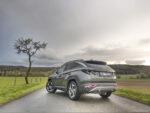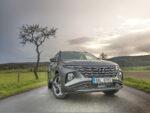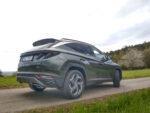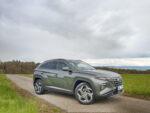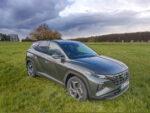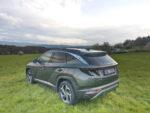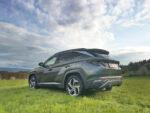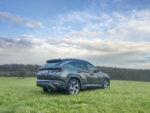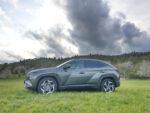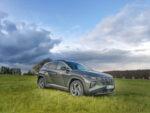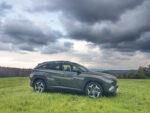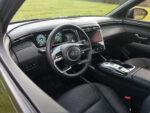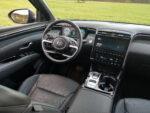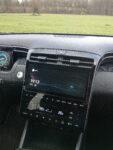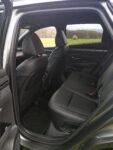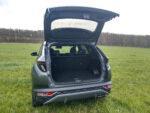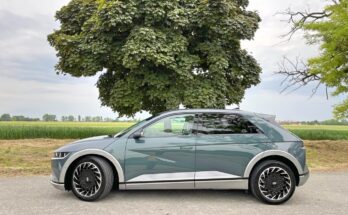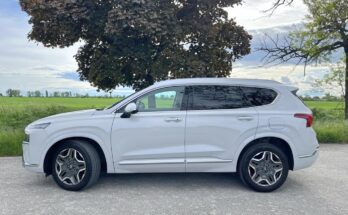When we focus on the new models of the Hyundai car company, it is clearly visible that we have a really significant shift in terms of external design. Recently, the carmaker is not afraid to experiment and offers very bold and original shapes in its cars. Whether it is the new i20 , the Ioniq or the Bayon model , the currently tested new generation of the Tucson model has become another prominent representative and pioneer of this innovative approach.
Hyundai decided to significantly spice up this very successful model and make it an expressively exceptional and original car. Its unmistakable and distinctive exterior design may arouse slightly contradictory opinions, but give it a chance and let it get under your skin.
I currently tested the gasoline Tucson with mild hybrid technology, all-wheel drive, a seven-speed DCT automatic and the Style equipment enhanced with the Premium package.
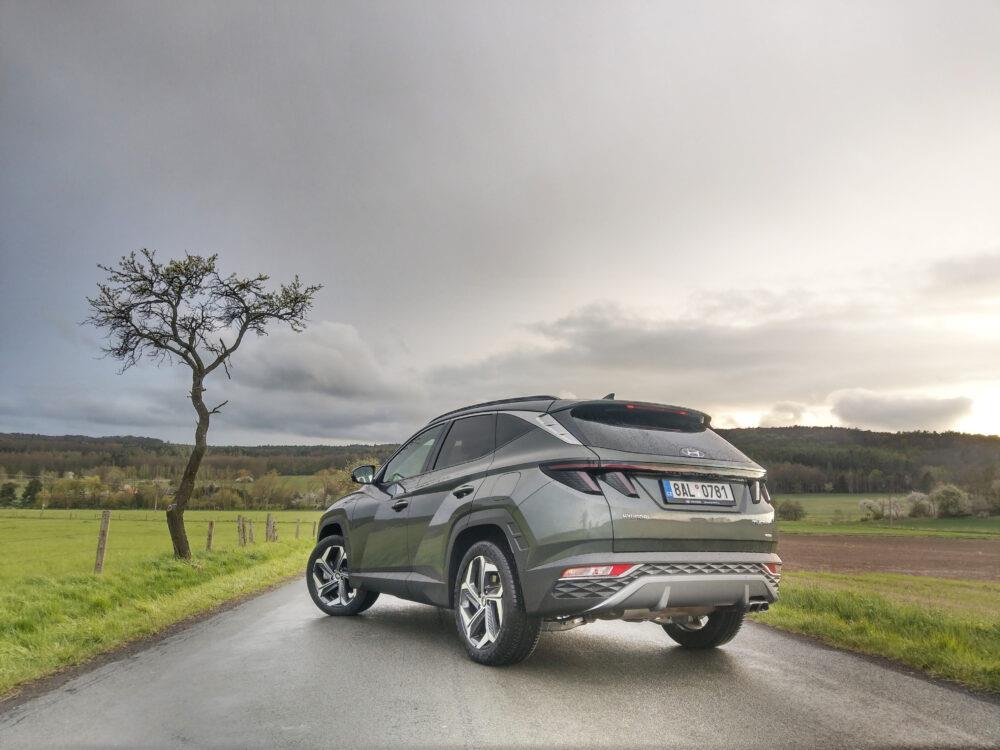
Unmissable and timeless design
The announced bold exterior is the main attraction of the new generation. Robust proportions and distinctive curves then play a major role in its shaping.
The originally designed front part of the car catches the eye of the onlooker at first glance. It is dominated by a massive mask with integrated headlights, which are almost insignificant when turned off. When they are activated, a large part of the mask lights up, giving the car a typical light signature evoking angel wings.
The side profile of the car will offer the greatest dose of robustness and "stout" shapes. Prominent moldings are complemented by massive plastic cladding on the side edges and thresholds. All according to the rules that are so typical for this category.
In the rear part, the taillights are the most interesting, they are quite effectively connected by a prominent horizontal line, which is followed by a quartet of prominent light "claws".
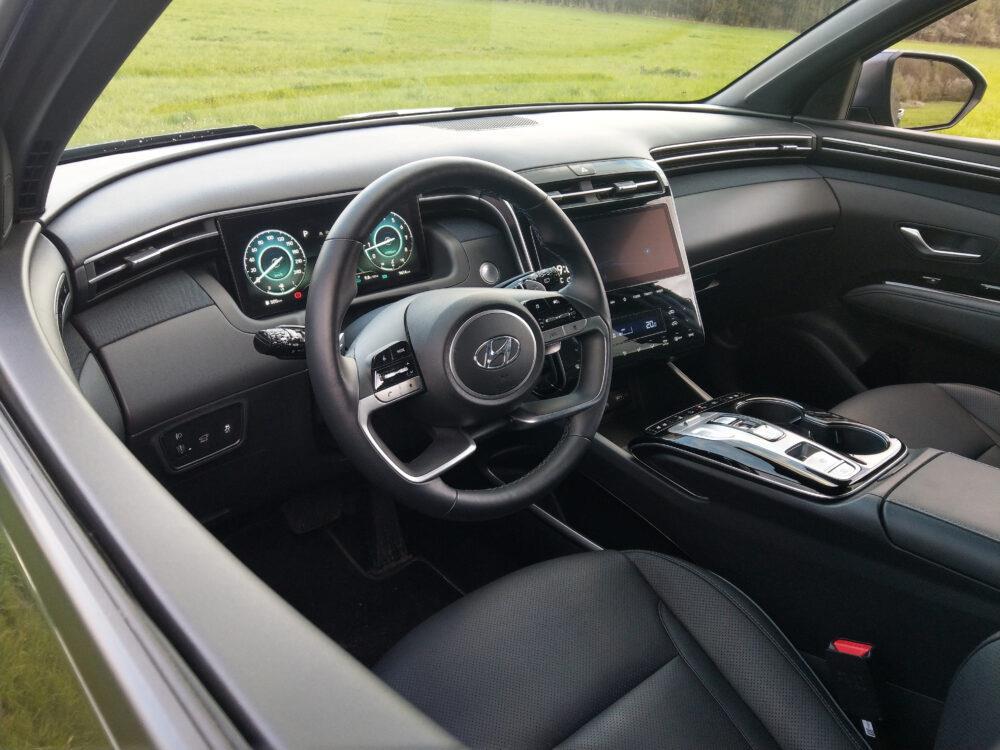
High quality and spacious interior
The relatively calm and slightly "chubby" interior contrasts interestingly with the bold and sharply cut exterior of the new Tucson.
Immediately after sitting in the car, you will be very pleasantly surprised by the low position of the dashboard, its position and the fact that nothing sticks out of it have a huge effect on how great the view is from the car.
The dashboard does not even offer a classic instrument panel in front of the driver, there is only a tablet integrated into the dashboard, a simple and practical solution.
Practically, it is a fully digital display that informs you about everything you need, in a graphically pleasant and clear environment. As part of the driving assistants, this display comes with a new feature that relates to blind spot monitoring. The speedometer or tachometer alarm changes when the turn signal is activated and shows you the image from the corresponding side camera.
The car's dashboard itself is further cut from both sides by a simple, elegant line that originates from the side panels of the doors. The two lines then meet in the center of the dashboard and thus define the area reserved for the on-board infotainment display and individual control elements.
The main on-board infotainment display (10.25") is slightly tilted towards the driver and, similarly to the display of the instrument cluster itself, offers a very pleasant graphic environment. A certain degree of personalization of the environment is also a matter of course, so getting to know its controls will definitely take some time.
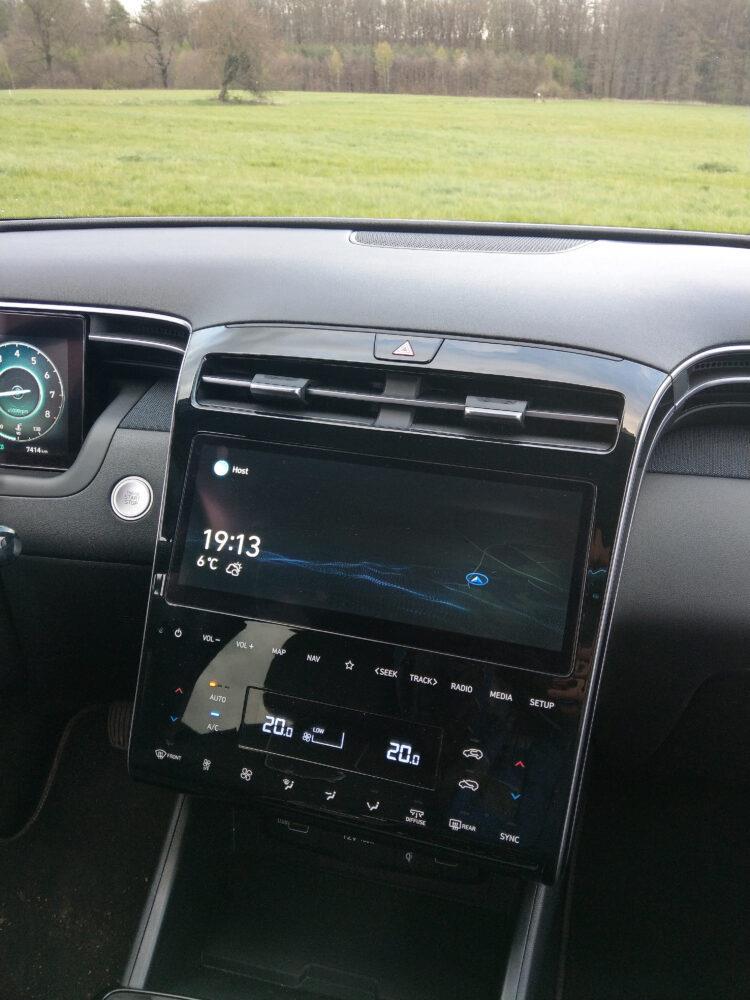
Its basic display, which combines a clock with a simple graphic that transitions into a simplified display of the current map from the navigation, became a very elegant motif for me. A really nice and ever changing detail.
The central tunnel of the car has a relatively elevated orientation, mainly thanks to the button control of the automatic transmission. The entire tunnel thus pleasantly allows your right hand to rest at will.
The interior of the new generation of Tucson should also be praised for its excellent processing and treatment of individual details. Personally, I would prefer a more colorful and playful combination, but that's a matter of opinion. Its other positives definitely include interior spaciousness, both in the front and rear positions. The luggage compartment of the new generation will offer a very respectable 577 liters of volume.
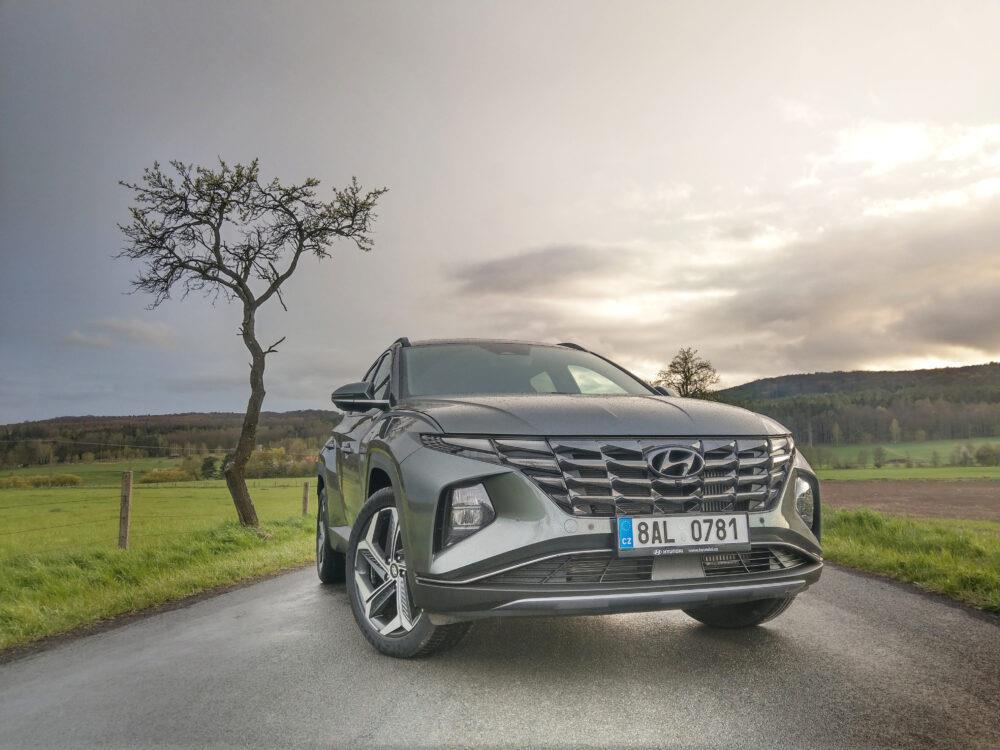
Offered motorizations and driving impressions
The range of engines currently offered is quite wide, even in the context of the fact that it is only a sixteen-hundred-cubic-inch model.
The diesel variants are represented by a turbocharged 1.6 CRDI engine and will offer 85 and 100 kW, while the more powerful of them has mild hybrid technology. The weaker diesel is "front-wheel drive" with a six-speed manual transmission, the stronger one will offer drive to one or both axles and always cooperates with a seven-speed DCT automatic.
Gasoline engines are available in five versions. These are the basic 110 kW petrol, 110 kW petrol with mild hybrid technology, 132 kW petrol with mild hybrid technology, 132 kW petrol with hybrid technology and 132 kW petrol with plug-in hybrid technology . And to top it off, you can choose between driving one or both axles, as well as between a six-speed manual or a seven-speed DCT automatic. Of course, not always completely arbitrarily.
For the editorial test, I currently earned a Tucson with a turbocharged gasoline engine with an output of 132 kW and a torque of 265 Nm. The engine was also equipped with 48V mild hybrid technology, the car also had all-wheel drive and a seven-speed dual-clutch DCT automatic.
In terms of numbers, this combination promises acceleration from 0 to 100 km/h in a respectable 9 seconds, a maximum speed of 201 km/h and a combined consumption of 5.6 liters.
The recuperative mild hybrid technology with the battery located under the passenger seat actively tries to reduce the consumption of the car, so the car can sail in ideal situations and the activated eco mode. Despite this effort, I unfortunately did not get below the limit of 9.0 liters with the weekly consumption.
The turbocharged gasoline engine is characterized by a very quiet performance, which is only really noticeable in the cabin at higher revs. Its performance is then very adequate for a car weighing 1.7 tons. I have to praise the dual-clutch seven-speed automatic, the individual gears fire promptly and very smoothly, the gearbox shifts logically and thus underlines the overall comfortable tuning of the car.
When tested, the piece offered adaptive shock absorbers, its chassis performance is very comfortable in eco and normal modes. The sports mode then logically stiffens the chassis and stiffens the steering as well, especially with the Tucson I didn't linger at all in sport.

In conclusion
The current price list of the Tucson model is quite extensive due to the large number of motorizations offered. The basic Tucson in the Start equipment level with a 110 kW petrol sixteen-cylinder engine and a six-speed manual starts at a very respectable amount of CZK 529,990 including VAT. You can then purchase the basic diesel 1.6 CRDi from CZK 599,990. You can also get a classic Hybrid in the lowest trim level, Start, from CZK 699,990 including tax.
In addition to the classic versions, a new plug-in hybrid is also available in the next Comfort trim level, from CZK 899,990 including VAT. The following equipment levels are Smart and Style, and the most expensive Tucson in plug-in hybrid design starts with its purchase price at a promotional amount slightly exceeding one million crowns, namely 1,049,990 CZK.
The new generation of Hyundai Tucson is simply different, distinctive and bold in design. Only time will tell whether its boldness and certain timelessness will in some way affect the sales of this model. Because otherwise, the new Tucson is a comfortable car with a well-crafted and spacious interior, and also with a wide range of power units on offer.
Source: Author's text
Image source: Author's own photos



